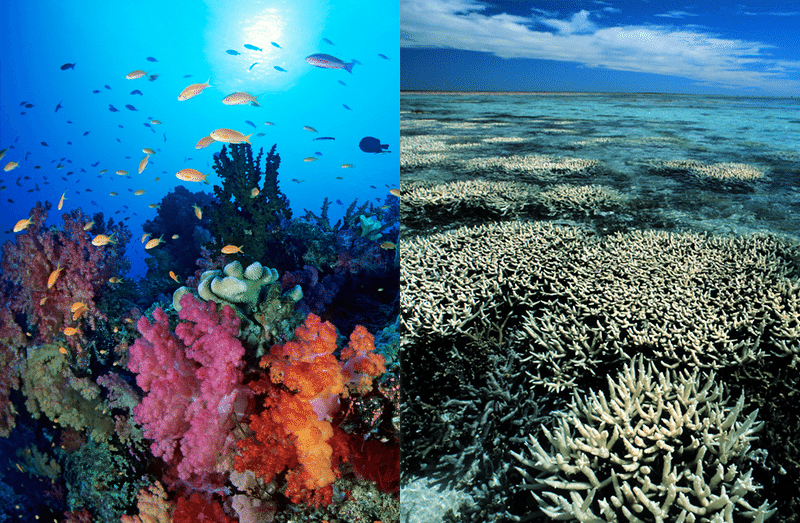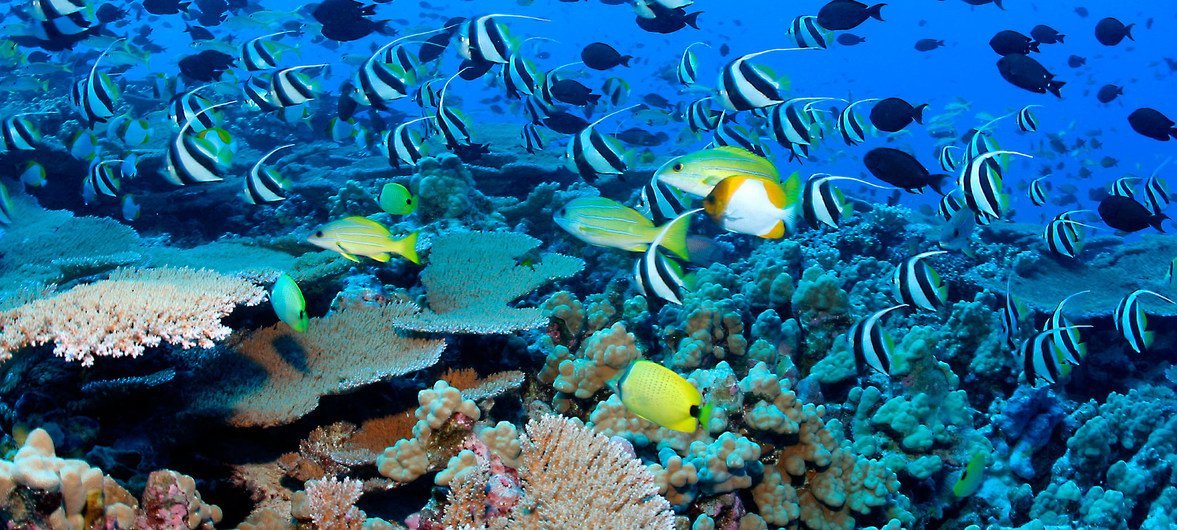Bleaching happens when coral gets stressed and turns white because the water it lives in is too hot.

Photo on the left is normal coral, and photo on the right is bleached coral.
Coral sustains ocean life, fishing, and creates trillions of dollars of revenue annually.
Coral animals rely on single-celled algae, which produce food for corals through photosynthesis. The algae are how corals get their color. When temperatures get too hot, instead of photosynthesis, the algae produce toxins that create free radicals. Coral biologists call this oxidative stress, which turns the algae “helpers” into killers.
In Florida, thermal stress on coral begins when sea surface temperatures reach 88-89 degrees. Florida sea surface temperatures exceeded those levels last summer, in June and July 2023, with an unprecedented spike into the high 90s in many locations.
A water monitoring station in Manatee Bay, Florida, recorded a temperature of 101.1 degrees.
Coral sustains ocean life, fishing, and creates trillions of dollars of revenue annually. As the climate continues to warm, researchers are bracing for more impacts.

